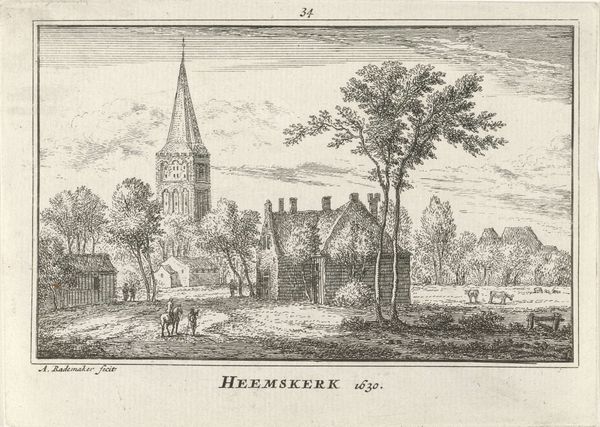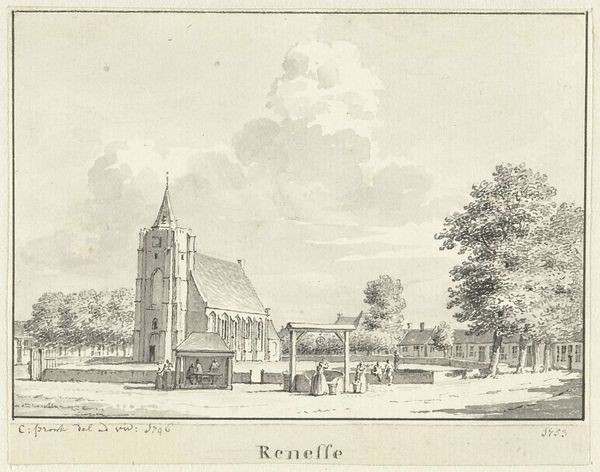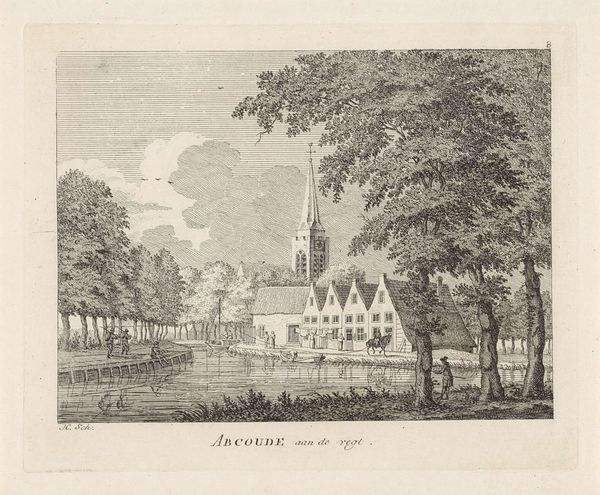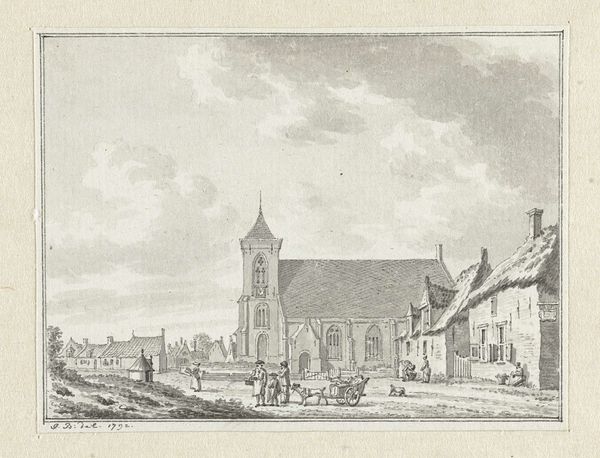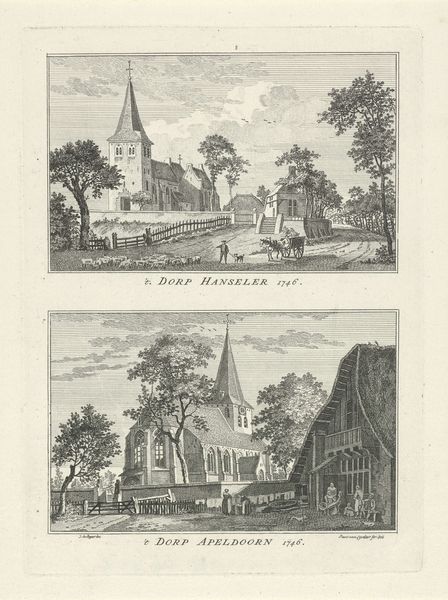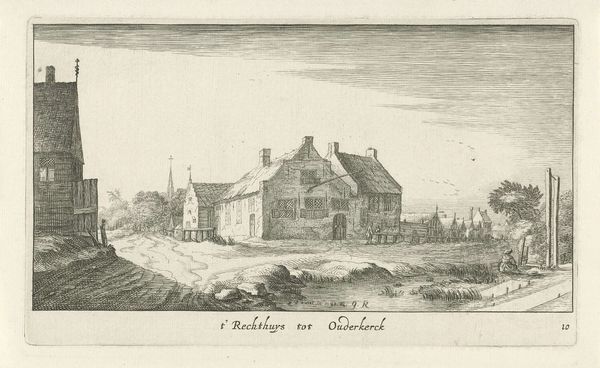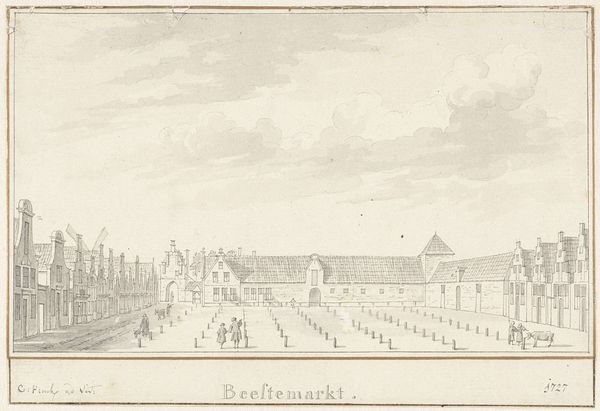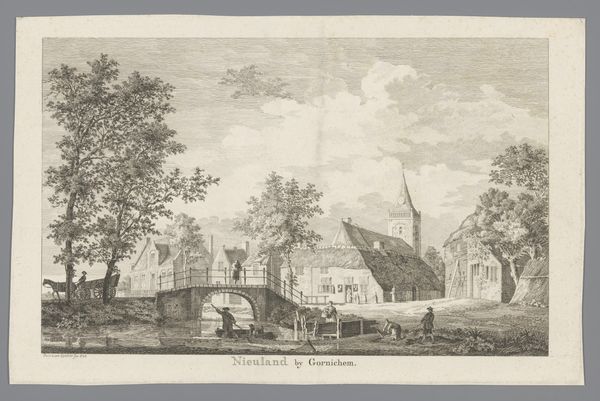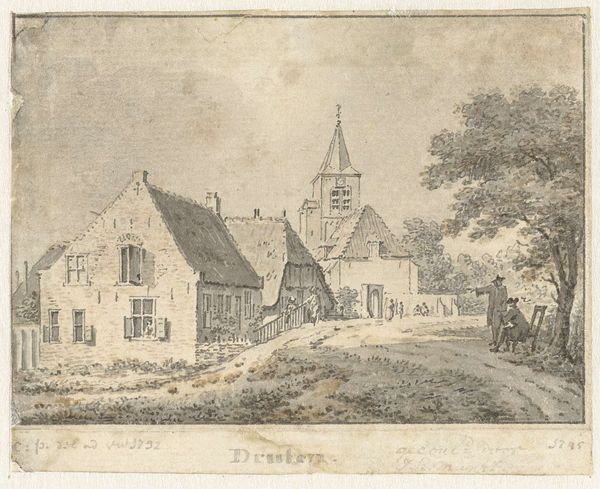
print, etching, engraving
#
baroque
# print
#
etching
#
landscape
#
cityscape
#
engraving
#
realism
Dimensions: height 118 mm, width 170 mm
Copyright: Rijks Museum: Open Domain
Willem Writs made this etching of Breukelen in the second half of the eighteenth century, a time when the Dutch Republic was in decline, overshadowed by its neighbors, England and France. Writs offers us a serene and orderly image of Dutch village life. The church anchors the composition, a symbol of communal values. But it’s the horse-drawn carriage that catches the eye, suggesting wealth and a degree of social stratification. The village's architecture is neat and uniform, indicating a society governed by rules and regulations. What is the public role of art? Prints like this one served a documentary function but also reinforced an image of Dutch society as stable and well-ordered, perhaps in response to growing social and political tensions. We can only speculate about the politics of this imagery: Was it a form of social critique, or did it reflect the conservative values of its commissioners? Historians delve into archives, newspapers, and other period documents to discover how such images were understood and consumed at the time. The meaning of art is always contingent on social and institutional contexts.
Comments
No comments
Be the first to comment and join the conversation on the ultimate creative platform.
